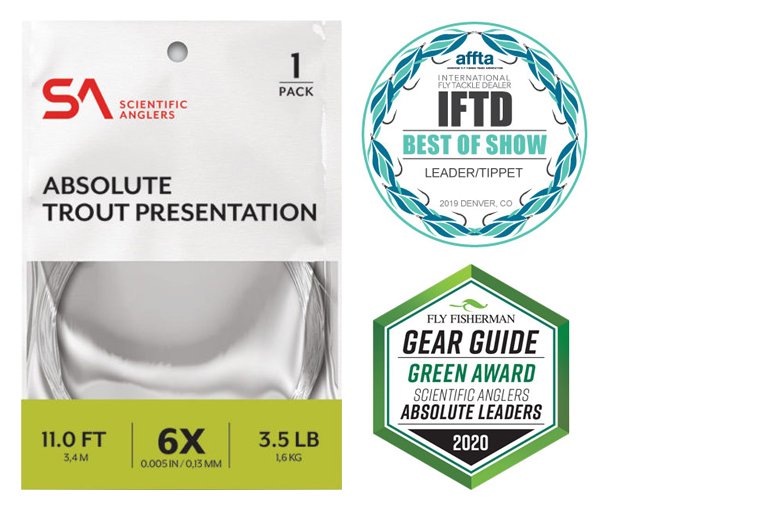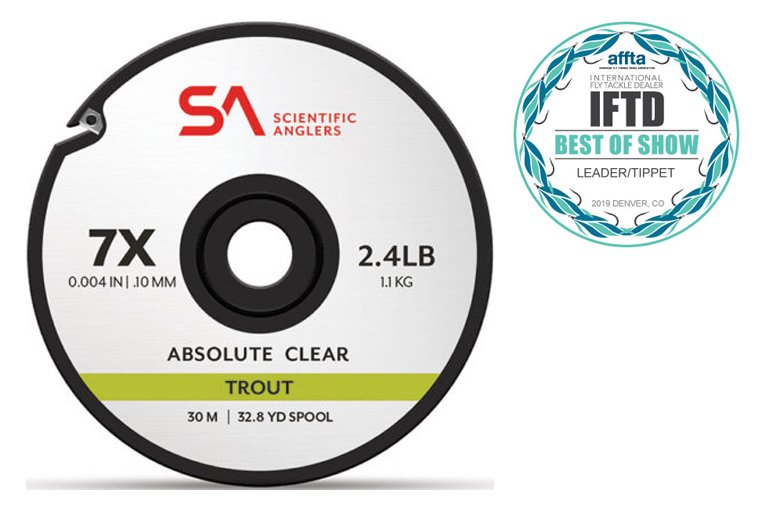Tapered Leaders (Dry Fly Fishing)
I get asked a lot of questions about tapered leaders, I think firstly it is important to discuss the purpose of the tapered leader, that being tapering a leader reduces the power created from a fly line. That’s its main job — to dissipate power evenly, while providing a near invisible section between the fly line and the fly.
Why do we need to reduce or bleed off energy? Simply put - presentation, to turn over the fly and have it land softly, hence quietly on the water.
Most leaders, as a basic guide, for trout fishing are 7.5 feet to 12 feet and usually 3X to 7X (Leaders are measured by an “X” rating system which shows how thick or thin the leader is. When is comes to leader and tippet the number next to the X can be tricky because a smaller number, the stronger and thicker line. So 1X is very strong and made for larger fish species like Atlantic Salmon, while 7X is for small trout).
Image courtesy of Mayfly Tackle
When selecting a leader and tippet combination we should also know what fly size your particular weight rod and line is designed to cast. The table below shows the general rule of thumb for fly rod and fly line weight and fly size. I have seen many different recommendations and some may argue that the table is too liberal, others that it is too restrictive, but it will still serve as a good starting place.
When selecting a leader and tippet it more so directly relates to the fly size. The table below is a guide based on an old rule of thumb, which is divide the fly size by 3 (example- size 18 fly 18/3 = 6, so 6X tippet) this is a good starting point, albeit not gospel as you could use 7X if the fish are finicky or spooky as it is less visible in the water, however, you might entice the fish to eat but landing bigger fish maybe challenging on 7X as its less than 2.5lb test (Scientific Angler Absolute Trout 2.4lbs test).
A rule of thumb when selecting length
Small streams, a 7.5ft leader.
Most streams, a 9ft leader will be the most appropriate.
Most lakes or streams where you need a softer presentation , a 11ft leader will be the most appropriate (Scientific Anglers Presentation trout).
Spooky fish in gin clear water , you may need to go as long as 15ft.
At the heart of every good leader design is an intentional balance between turnover and drag (Drag is death to a dead drift, a dead drift is what we are trying to achieve). Thicker and stiffer material gives more power and push to a leader. 3X carries the power of our cast with more force to the end of the line, while 7X has far less punch. (Likewise, a thicker butt section carries more power than a thinner one.)
But that same 3X tippet drags more than 7X. And it may create that drag in different places: on the surface, under the surface and in the air. Being both thicker and stiffer, 3X is more influenced by water currents than 7X. Likewise, the thicker 3X simply weighs more, so it hangs more and sags more in the air, as always, sag equals drag.
Scientific Anglers manufacture a range of tapered leaders in most sizes, suitable and more than capable for all trout fly fishing applications they have done the maths and science for you. Scientific Anglers tapered leaders are a well-designed leader, and are a calculated balance between the counterparts of turnover and drag.
Image courtesy of Mayfly Tackle
You’ll know when you’ve got it right when the fly lands perfectly (assuming you cast well of course) and looks like a natural insect on the water. This is less important for nymph and wet fly fishing than it is for the presentation of dry flies. The following graphic shows a couple of the common problems that can occur.
Figure 1. Example A: Leader too Short or too Light, B: Leader too Long or too Heavy and C: Leader Just Right.
Figure A - shows a cast that results in the leader all piled up in one place. This is not always bad and you may want to do it on purpose with a parachute cast to put some slack in the line, but this is not good when you don’t want the slack, but want to cast like Figure C. This is caused by a leader that is too short and/or too light for the fly line and fly combination. The heavy fly shoots past the line and bounces back when it runs reaches the end and lands in a heap because it is not bleeding off enough energy. It is not fishing properly and can be dangerous with heavy flies because the fly also does this on the back cast, so when we try to cast forward, it is out of control. Watch Out..!
The solution to a fly with too much energy is to add more tippet, especially by adding smaller (lighter) tippet before the fly. For example, If using a 9 foot 5X tapered leader and your fly is bouncing back, try adding an additional foot of 5X, 6X or 7X tippet to the leader, then tie the fly on
Figure B - shows what happens when the leader is too long or too heavy for the fly line and fly combination. There is too much drag and the fly fails to turn over. This also leads to more “wind knots”, which are mainly caused by open loops. Another scenario is the fly is to heavy for the leader and tippet combination (example 6X leader will not effectively turn over say a size 10 hopper pattern) Foam and bulky brush flies will require a heavier tippet section to turn over.
The solution to a fly with too little energy is to remove tippet because you are bleeding off too much energy. For example, If using a 9 foot 6X tapered leader and your fly is landing in a heap, try using a 7.5 foot leader. You can also try removing a foot of the leader, but then the terminal end is larger than 6X. You may have to remove more 2 or 3 feet, then add a foot of 6X and/or 7X tippet back to the shortened leader before tying on the fly.
Image courtesy of Mayfly Tackle
How do I know what to alter in my rig? This comes from experimentation, to understand the process you have to put it into practice. It takes an advanced angler’s mindset and a willingness to adjust. Reel Fly Fishing guides are happy to help you hone your skill set you can book a lesson (click here).
To purchase Scientific Angler products call the experts at Boss Outdoors.





